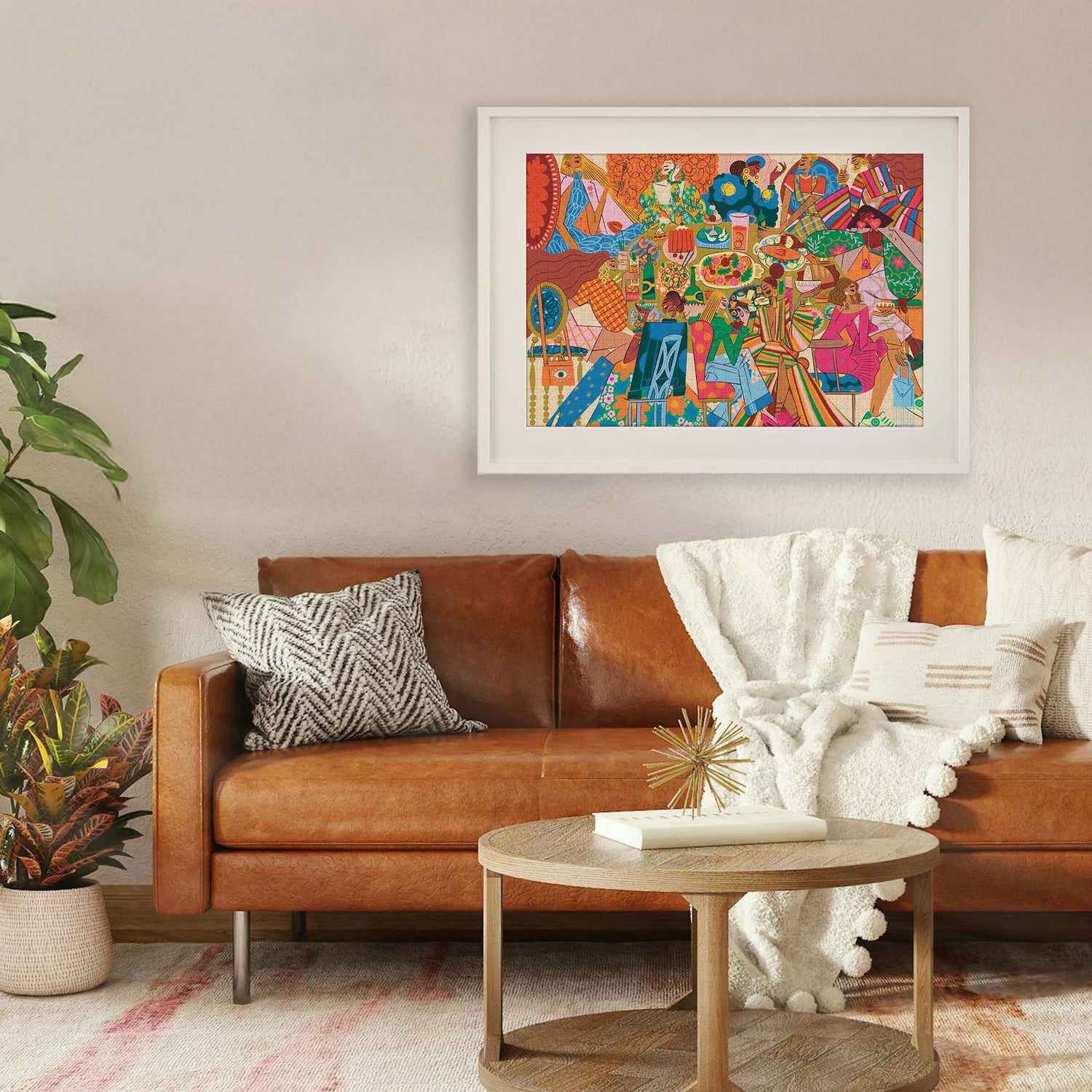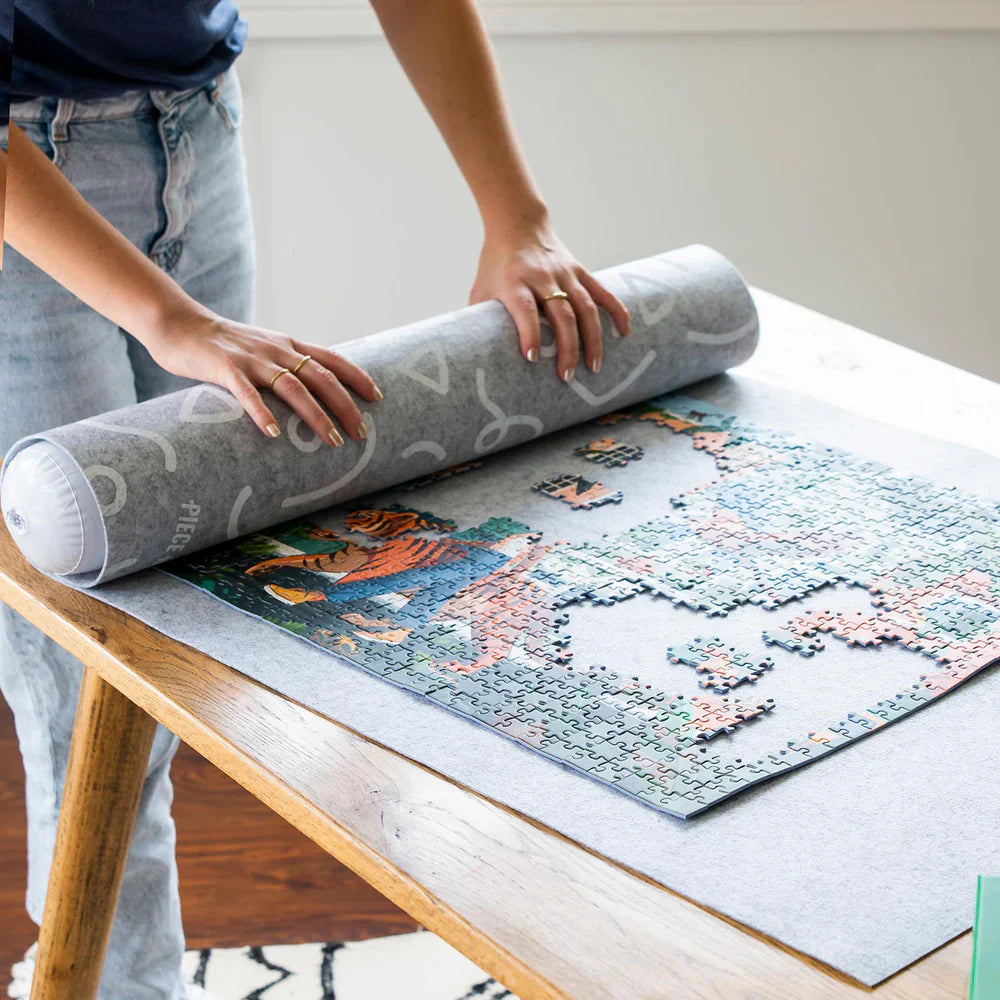Completing a jigsaw puzzle can be a deeply satisfying experience, especially when you've conquered a challenging 1000 piece puzzle. But why let all that effort go unnoticed? Framing your completed puzzle allows you to showcase your achievement and turn it into beautiful wall art. It's a fantastic way to preserve the memories and hard work that went into finishing each small section.
Framing a puzzle takes more than just putting it in a frame; it involves choosing the right materials and applying the right techniques to keep it secure. By taking the time to properly frame your puzzle, you ensure it remains a vibrant and lasting addition to your decor. Seeing your completed puzzle hanging on the wall can bring a sense of accomplishment every day.
Whether it's a vibrant masterpiece from one of New Zealand’s talented artists or a picture puzzle that holds personal significance, framing allows your puzzles to become more than just a pastime. Transform them into centrepieces that add personality and charm to your living space, breathing life into your walls.
Gathering the Right Materials: Preparing for Success
Having the right materials on hand is crucial for framing your puzzle elegantly. A quality frame is fundamental as it keeps your puzzle protected and enhances its appearance. When choosing a frame, consider the puzzle's theme and size. If you’ve completed a stunning 1000 piece puzzle, for instance, a robust frame with a suitable backing material will offer the support it needs. A frame that complements the artwork and fits your décor becomes a valuable asset.
Before you start, make a checklist of essential supplies: spray adhesive, Modge Podge, and a roller. These will help secure your puzzle before it's framed. Spray adhesive is useful for keeping the backing in place, while Modge Podge acts as a sealer that protects and preserves the puzzle's surface. A roller assists in ensuring the puzzle adheres well without any peels or loose edges.
Knowing what each material does well and having them ready will ensure the framing process goes smoothly. With everything in place, you'll be prepared to turn your masterpiece into a display item that adds character to your space.
Securing Your Puzzle: From Pieces to Artwork
Securing your jigsaw puzzle before framing is a must to keep it looking pristine. Begin by carefully flipping your completed puzzle onto a large sheet of paper or cardboard. This helps maintain the alignment of puzzle pieces while you work on the reverse side.
Next, apply the adhesive. Spray a generous amount of adhesive across the puzzle's back, ensuring you cover the entire surface. This step keeps the pieces from shifting over time. Thoroughly check to make sure that the edges are well-coated and no pieces are left without adhesive.
Once the adhesive is applied, press down gently on the puzzle to ensure it sticks firmly to the backing. This is where the roller comes in handy. Use it to iron out any air bubbles or uneven edges, ensuring a smooth surface when viewed from the front. Roll in careful, overlapping strokes from the centre outwards to eliminate any chance of wrinkles or misalignment.
Allow the adhesive to dry thoroughly before proceeding to the next step. This ensures every piece is glued in place, transforming your puzzle from a set of loose pieces into a cohesive artwork ready for framing. With these steps, your puzzle is secure and ready to be showcased.
Framing Techniques: Making Your Puzzle Stand Out
Framing your puzzle effectively can turn it into a stunning display piece that commands attention. There are several mounting options to consider, each affecting your puzzle's appearance. You might want to use adhesive to mount your puzzle directly onto a sturdy board or use corner pockets that keep the puzzle intact without glue. This latter option is excellent for those who might want to remove or replace the puzzle later.
When it comes to the frame itself, consider the pros and cons of using glass versus acrylic. Glass offers a crisp, clear view and is more scratch-resistant, but it's heavier and can break. Acrylic, on the other hand, is lightweight and shatterproof, making it safer, especially for larger pieces.
Adding mats or using a shadow box can also give your puzzle a professional touch by adding depth and drawing the eye inward. Mats bring focus and can highlight specific colours in your puzzle, while shadow boxes provide a three-dimensional look that's visually appealing. Spend some time experimenting with different framing techniques to see what works best with your particular puzzle.
Display Considerations: Showcasing Your Masterpiece
Choosing where to display your framed puzzle is crucial for ensuring it becomes a focal point in your home. Start by selecting a spot that benefits from natural or accent lighting, which can highlight the bright colours and intricate details of your puzzle. Hallways, living rooms, and above mantels are popular choices, as these areas tend to catch the eye of visitors.
Lighting is not only about visibility; it also sets the mood and enhances the overall aesthetic. Consider using directional lighting or spotlights to emphasise specific features of your puzzle. If you frame your puzzle under glass, be cautious with direct sunlight as it can cause fading over time.
Maintaining the vibrant look of your framed puzzle involves regular cleaning. Use a soft cloth to gently dust the frame and the glass or acrylic surface. Check occasionally for any warping or loosening of pieces, especially if you experience changes in humidity. Frequent monitoring and care will ensure that your puzzle stays as striking and beautiful as the day you finished it.
Conclusion
Turning your completed jigsaw puzzle into a framed piece of art is a rewarding way to celebrate your dedication and creativity. By investing time in gathering quality materials, securely fixing your pieces in place, and experimenting with different framing techniques, you ensure that your puzzle gains new life as a stunning home decoration.
Incorporating the framed puzzle into your living space is just as important as the framing process itself. Selecting the perfect location and lighting can further accentuate your puzzle’s beauty and allow it to complement your home decor seamlessly. Regular maintenance will keep your artwork in pristine condition and help prevent any potential damage.
At PieceHouse, we understand the joy of piecing together stunning jigsaw puzzles and then admiring the outcome as part of your daily life. Whether you're framing a vibrant 1000 piece challenge or a sentimental puzzle picture, it becomes more than just a hobby; it's art. Explore our selection of unique puzzles and jigsaw puzzle frames today that can help transform your puzzle projects into masterpieces that last.





